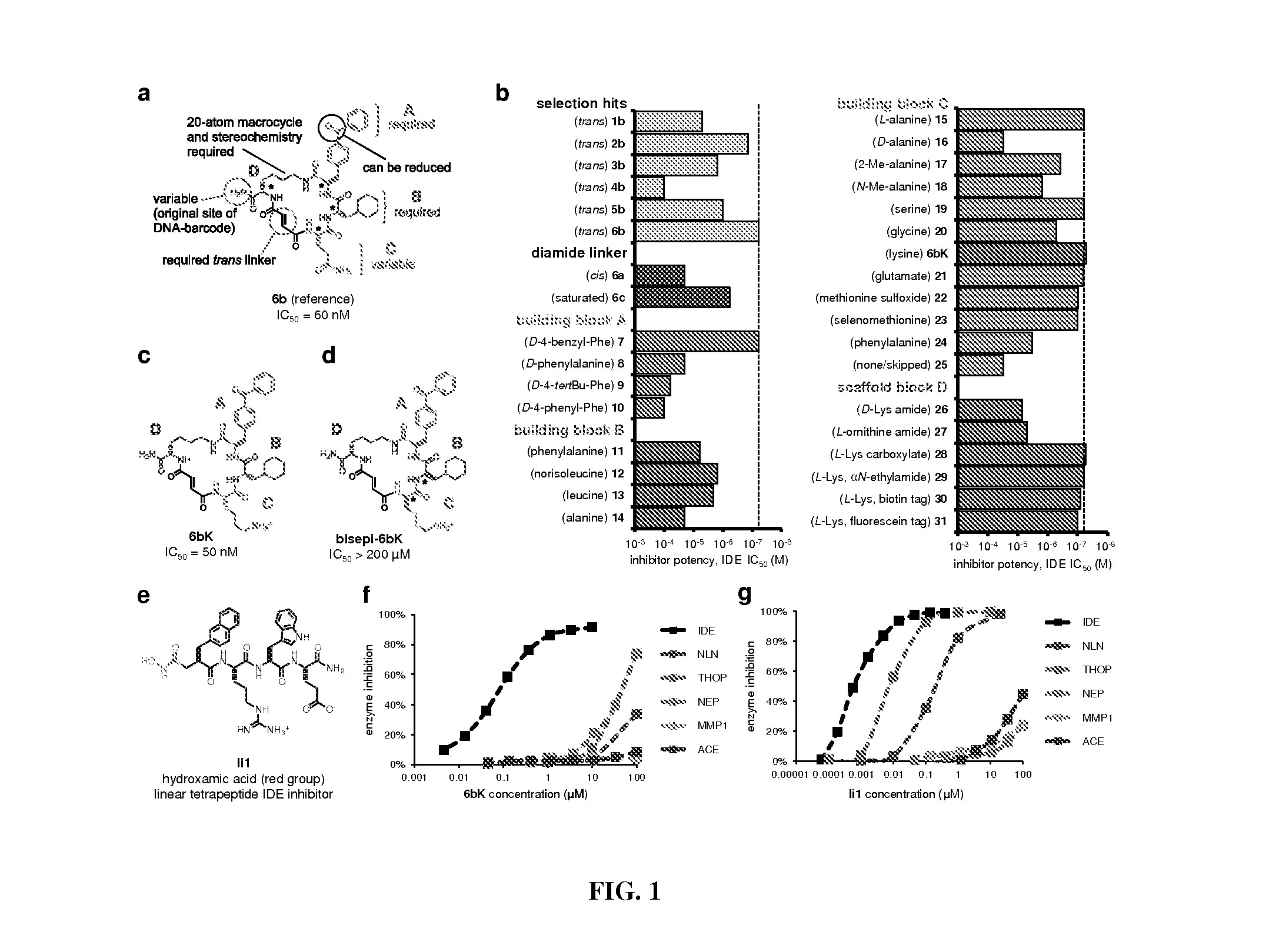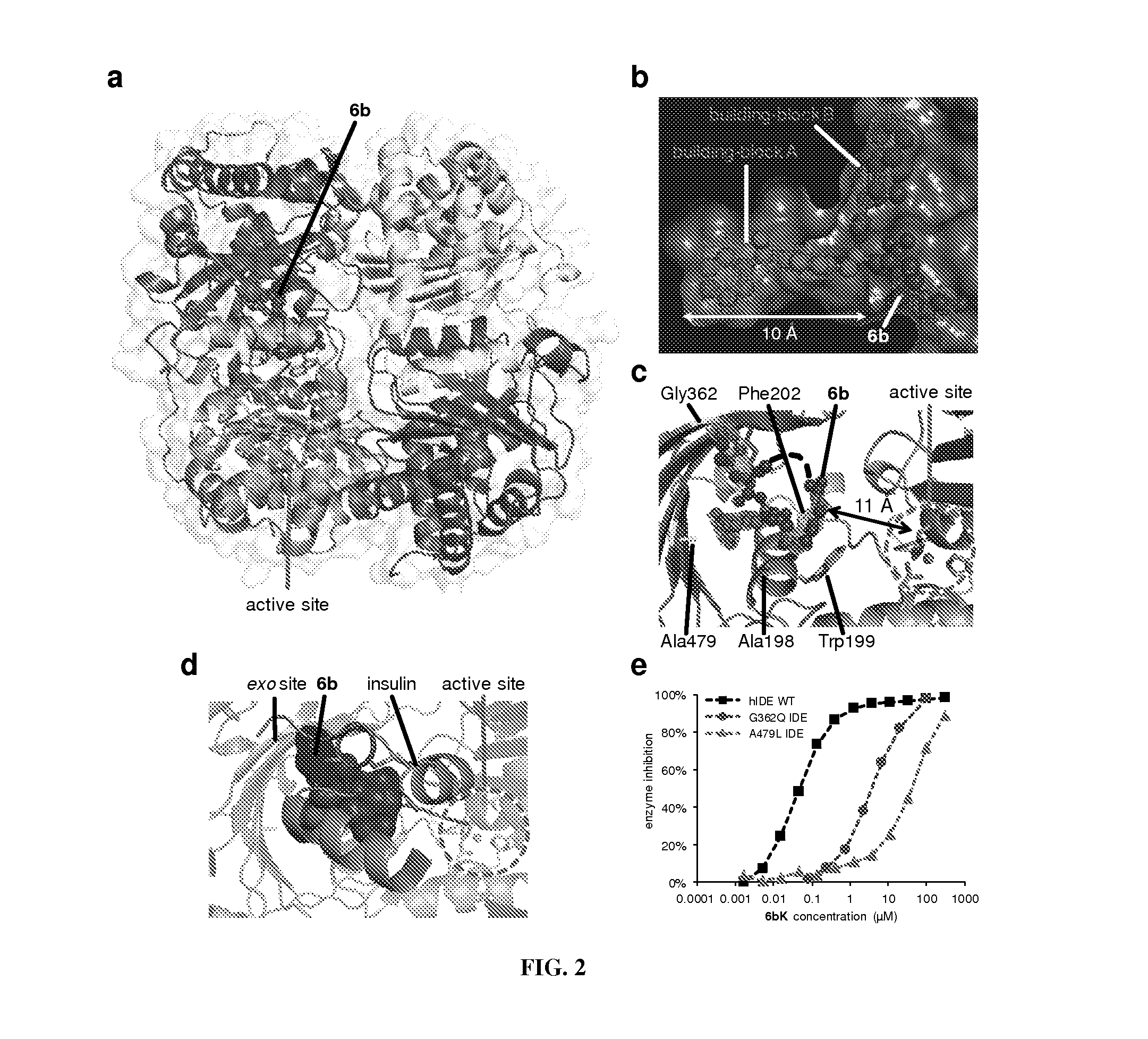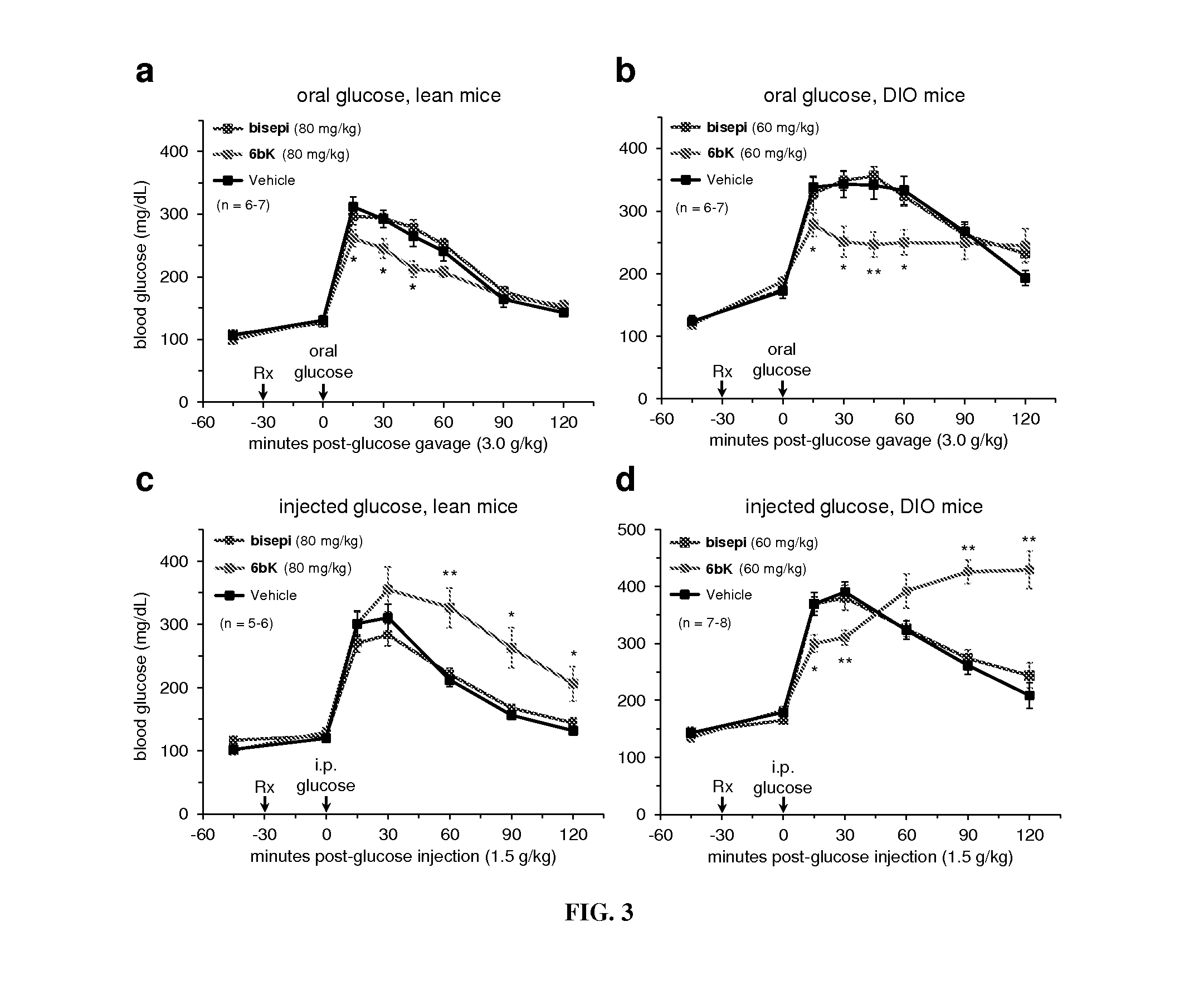Assay for insulin-degrading enzyme (IDE) inhibitors
a technology inhibitor, which is applied in the field of insulin degrading enzyme (ide) inhibitor, can solve the problems of unclear relationship between ide activity and glucose homeostasis, and achieve the effects of slow gastric emptying, improved glucose tolerance, and increased cgrp-induced blood glucose level fluctuations
- Summary
- Abstract
- Description
- Claims
- Application Information
AI Technical Summary
Benefits of technology
Problems solved by technology
Method used
Image
Examples
example 1
Anti-Diabetic Activity of Insulin-Degrading Enzyme Inhibitors Mediated by Multiple Hormones
[0175]The dynamic interplay between the production and proteolytic degradation of peptide hormones is a key mechanism underlying the regulation of human metabolism. Inhibition of the peptidases and proteases that degrade these hormones can elevate their effective concentrations and augment signaling. In some cases, the resulting insights can lead to the development of novel therapeutics1. Dipeptidyl peptidase 4 (DPP4) inhibitors, for example, are anti-diabetic drugs that increase the concentration of the insulin-stimulating hormone glucagon-like peptide 1 (GLP-1), resulting in elevated insulin concentrations and lower blood glucose levels2. Researchers have speculated for at least six decades that insulin signaling could also be augmented to improve glucose tolerance by inhibiting its degradation3,4. The zinc metalloprotease insulin-degrading enzyme (IDE) is thought to be the primary enzyme re...
example 2
Modulation of Blood Pressure by Insulin-Degrading Enzyme Inhibitors
[0248]In order to determine whether IDE inhibitors modulate blood pressure, the effect of 6bk in a mouse Calcitonin Gene-Related Peptide (CGRP) model was evaluated. CGRP is a potent microvascular vasodilator widely expressed in the central and peripheral nervous systems of vertebrates. Administration of CGRP resulting in supraphysiological plasma levels of CGRP results in temporary vasodilation, hypotension, and an increased heart rate. This effect has been demonstrated after intravenous administration of CGRP in various vertebrate species, including humans.
[0249]CGRP-induced hypotension is dose-dependent, as illustrated in FIG. 16, showing data from a single mouse injected with different doses (0.5 μg, 1 μg, and 3 μg) of CGRP. Blood pressure was measured over a time of 20 minutes after administration of CGRP. A dose-dependent, temporary induction of hypertension by CGRP was observed.
[0250]FIG. 17 illustrates represe...
PUM
| Property | Measurement | Unit |
|---|---|---|
| concentration | aaaaa | aaaaa |
| concentration | aaaaa | aaaaa |
| concentration | aaaaa | aaaaa |
Abstract
Description
Claims
Application Information
 Login to View More
Login to View More - R&D
- Intellectual Property
- Life Sciences
- Materials
- Tech Scout
- Unparalleled Data Quality
- Higher Quality Content
- 60% Fewer Hallucinations
Browse by: Latest US Patents, China's latest patents, Technical Efficacy Thesaurus, Application Domain, Technology Topic, Popular Technical Reports.
© 2025 PatSnap. All rights reserved.Legal|Privacy policy|Modern Slavery Act Transparency Statement|Sitemap|About US| Contact US: help@patsnap.com



